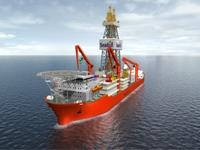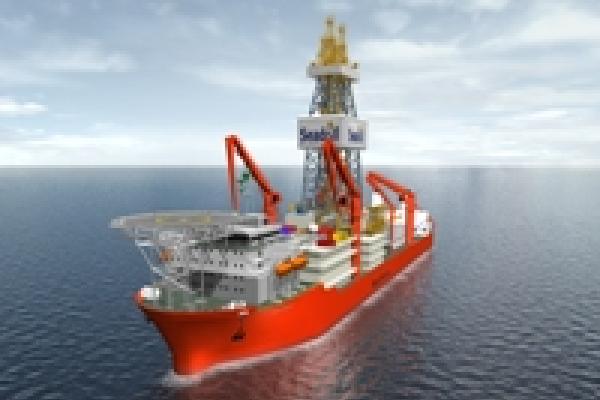
Steamship Mutual
Published: December 01, 2007

As the price of oil creeps steadily towards US$100 per barrel, the new emerging economies of China and India demand industrial levels of power and the oil reserves in accessible parts of the ocean diminish, it is inevitable that energy companies will search for oil in the deeper areas of the ocean.
Exploration in deepwater is not new. It effectively started in the 1960’s with Project Mohole, an attempt to drill into the earth’s crust in a water depth of 3,500m (11,700ft). This was followed by the Deep Sea Drilling Program which resulted in drilling operations using the Glomar Challenger in water depths up to 7,000m (23,100ft). To set this in context, the deepest part of the ocean, the Mariana Trench, is approximately 10,900m (35,800ft); deep enough to submerge Mount Everest by over a mile. These operations were geological and oceanographic pursuits but they inevitably captured the interest of oil and gas companies.
The technology available to overcome the challenges of commercially drilling and producing in deepwater has developed significantly since the days of Project Mohole. Developments such as dynamic positioning (DP), riser systems, synthetic moorings and advanced anchoring systems, along with the improved reliability of sub-sea equipment have all combined to make production viable in deeper waters.
Today, oil and gas exploration in water depths in excess of 300m (1,000ft) is considered to be deepwater and there are currently 15 rigs in the Gulf of Mexico drilling in over 1,500m (5,000ft) of water. According to the US Department of the Interior Service Deepwater Gulf of Mexico 2007 Report, there are over 4,200 active leases in deepwater with over 650 of these in water depths in excess of 2,200m (7,500ft). Consequently there appears to be a surge in deepwater drilling vessels under construction with capacities of up to 3600m. One drilling company, Seadrill, is reporting three mono-hull deepwater drilling vessels and six semi-submersible drilling vessels due for delivery between 2008 and 2010.
Development in deepwater production has progressed most rapidly in the Gulf of Mexico. The latest record breaking unit is the Independence Hub, a semi-submersible production unit in 2,400m (7,800 ft) water depth, which came online in July. The areas offshore West Africa and South America are steadily developing, with large capacity Floating Production, Storage and Offloading vessels (FPSOs); these are areas where installations are not expected to be exposed to extreme weather conditions. The Asia-Pacific area is now starting to move into deeper waters with countries like Australia, India and Indonesia pushing ahead with significant deepwater projects.
There are a variety of technologies available for developing oil fields in deepwater, all require sub-sea facilities installed by a limited number of high charge-out-rate vessels but it is the surface equipment that has to resist the rigors and perils of the sea. The range of these floating vessels includes Tension-Leg Platforms, Spars, Semi-submersible Floating Production Units (FPUs) and FPSOs.
Tension Leg and Semi-submersible production units have been in existence long enough to offer, potentially, a dependable option for their operators, but all of these are effectively purpose built expensive solutions that offer no means of quickly abandoning a field and moving to a sheltered location. Only FPSOs currently offer this prospect. Examples of such vessels exist on the White Rose and Terra Nova fields, offshore Canada’s East Coast, where the threat from icebergs arises. These vessels have submersible turrets that can be disconnected from the FPSO when iceberg impact is threatened. This is a concept that is suited to areas where extreme weather conditions are experienced, whereby the sub-sea assets can be kept in the relative safety of deepwater and the surface assets can be disconnected and relocated to shelter, or at least so that they are free to navigate to avoid an impending hurricane or cyclone. FPSOs also offer the economical option of converting an existing tanker, providing new business opportunities for shipping companies.
In the Gulf of Mexico there is a reluctance to use FPSOs and floating production units without storage have been preferred. This attitude is changing as FPSOs become proven throughout the rest of the world. The US Department of the Interior Service in their 2007 Report have recognised the potential of FPSOs and, in particular, the benefits of disconnectable units. This is probably due to the recent hurricane damage. They report approval of a Petrobras conceptual plan to use a disconnectable turret moored, ship shaped, FPSO with processing and storage facilities attached to wells in the Cascade and Chinook fields.
BW Offshore Limited, part of the BW Group formed in 2003 by Bergesen and World Wide Shipping, have already installed the first FPSO in the Gulf of Mexico, the Yùum K’ak’náab (which is also the worlds largest converted FPSO) offshore Mexico. BW Offshore Limited has now been chosen to convert, install and operate a 600,000 bbl FPSO at the Chinook and Cascade Fields in the US Gulf of Mexico. This FPSO will be installed in a water depth of 2,600m (8,500 ft), the deepest depth at which an FPSO has ever been installed. The disconnectable turret, mooring and production riser system is vital to the success of this system.
The future for deep water exploration is secure with technology currently available that allows drilling in water depths of 3,600m (11,500ft). Deepwater production, however, is moving into an exciting phase. Changing environmental conditions will feature in the Operators’ decisions as areas previously considered benign are occasionally exposed to hurricane force winds. The economics of disconnecting and lowering the mooring and riser systems to the relative safety of deep water and then navigating the surface facilities to shelter or safety will compete with the economics of surface facilities intended to stay on location and suffer the consequences of riding out the storm.
There is wisdom in avoiding the dangers associated with the extremes of weather in deepwater. Entirely sub-sea solutions provide an option and are being used in certain deepwater areas close to shore, such as the Nile Delta. However the volumes required for oil and gas storage, the space required for production facilities and the cost of lengthy pipelines mean that this solution is probably a long way off and that disconnectable systems have a future in deepwater. This is especially the case with the changing environmental conditions we experience today.
With thanks to Ian Sherrington and Jeremy Panes of Mwaves Limited for preparing this article.


